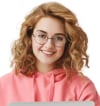AI has been a hot topic for quite a while. Some may wonder if we can use AI in risk management and assessment.
Artificial intelligence (AI) is faster. It can analyze large amounts of data in seconds and minutes. It's 100% data-oriented and makes fewer mistakes.
In this article, we will discuss the possibility of using AI in risk management. We will provide more details including benefits, how-tos, and more. Read on

In this article
Part I: Can We Use AI in Risk Management
The answer is a big "YES". Thanks to the fast and accurate data analysis, we can apply AI for many purposes. In this case, risk management is one of them.
When AI is able to process massive kinds of data, people use it in many ways. Let's see how AI helps assess and manage risk in projects :
- Finance: AI models can analyze market trends, credit risks, and fraud detection. They ensure sound financial decisions.
- Cybersecurity: AI can track network traffic without any pauses. It can identify anomalies and potential security breaches.
- Predictive Analysis (For finance): By collecting and analyzing all past data and trends, AI will compare the data before and after a risk. When there's similar data happening, AI will warn of the chance of risk. This is helpful for sectors like finance. It will suggest the trend of the market.
- Fraud Identification: Unusual patterns and anomalies in data will be visible to AI. Simply tell AI all the suspicious actions of a fraud like a person changing multiple accounts to complete a transaction. It will start to dig out whether it's fraud or not.
- Natural Disaster Risk Assessment: Before every disaster, something unusual will happen. The weather may change rapidly, animals may escape their habitats, rivers may stop, etc. AI will help us quickly collect data and fetch the records of similar changes.

Part II: Benefits of AI-Enhanced Risk Identification
Incorporating AI into risk identification processes provides a great advantage. In general, it's fast, efficient, accurate, and cost-saving. Compared to traditional risk assessment, AI-supported assessment seems to be a better way out. Let's take a look at the benefits of AI for risk management.
AI works fast:
Can a human deal with hundreds of files and 1 million characters along with graphs in 5 minutes? No way! But AI can do it. It will finish reading all the lines and give a quick overview of the data.
AI is accurate:
Compared to brain-thinking, eye-reading, and handwriting, AI makes it less possible to make mistakes. When it's been trained properly, it will form its unique logic to answer and solve troubles.
AI predicts things:
By comparing and analyzing current data collection, AI can identify potential risks easily. It monitors everything happening now and compares it to the past. When a similar thing happens again, it will warn of the chance of a potential event.
AI costs less:
Developers can automate the risk assessment process. This frees time and human resources. We don't need to sit at the desk to check on the data 24/7.
Decision-making is easier and faster:
Unlike data analysts who can only analyze, AI gives helpful suggestions. It collects data to tell all the solutions people have used before. It will list them to you when a risk happens.

Significance of AI for Risk Identification
Apart from these general benefits, AI has helped several fields to grow. Here are notable things to consider when using AI for risk identification across diverse industries.
Project Management
In project management, leveraging AI allows managers to anticipate potential resource allocation risks and communication risks. AI's ability to analyze vast datasets to identify patterns reduced the likelihood of delays and cost overruns.
Finance
In the financial sector, AI has revolutionized risk identification. It can assess credit and market risk by processing vast amounts of data in real-time. AI systems can also help financial institutions develop and implement adaptive risk management strategies. It's possible to incorporate machine learning models that evolve to address emerging threats and market fluctuations.
Cybersecurity
AI-powered tools can detect and classify threats like malware and potential data breaches. These solutions enable organizations to develop cybersecurity measures to protect their systems and data. Additionally, AI aids in automating threat assessment and response. It enhances overall cybersecurity posture while ensuring compliance with regulations and standards.
Comparison of Traditional Risk Identification Methods With AI
AI-driven risk identification surpasses traditional methods. Here is a table comparing traditional risk identification methods with AI.
| Traditional Risk Identification Methods | AI-based Risk Identification Methods |
|
|
Traditional risk identification relies on manual expert knowledge and historical data. It often focuses on known risks but can be time-consuming. In contrast, AI-based methods leverage machine learning algorithms to process vast datasets. These include real-time data, identifying both known and unknown risks. Because of the efficiency, AI-based risk management is more scalable and effective.
Side Effects of AI for Risk Management
Nothing is perfect and neither is AI. Though it brings many attractive benefits, we should not ignore the risks of using AI itself.
Data privacy
To train an AI to solve your problems, you'd better train your AI bot first. You may need to import a large number of data and files to let it learn and collect. You may think this is fine. But if you're using a public AI service like ChatGPT, it may sync your data to all public users.
Case in point: You work for Apple and you enter some secret files into ChatGPT like specs about iPhone 16 to train it. After that, if anyone asks for information about the iPhone 16, the AI will answer the question based on your data. This will lead to data leaks. Worse still, it's irreversible, you can't revoke the data you import.
This is the same when you consult AI about company policies. It will remember your company's policies and answer other people's questions with them.
Unless your company has developed a unique AI. Otherwise, it's not a good choice to tell the AI helper everything.
Part III: Use Cases of AI-Powered Risk Identification
AI-powered risk identification provides versatile use cases across various domains. By analyzing vast datasets, AI detects potential issues and offers data-backed insights. Here are some use cases where AI-powered tools assist in risk identification.
Fraud Detection and Prevention with AI
AI algorithms can detect unusual patterns or anomalies that might indicate fraud. These patterns could include unexpected account access, irregular purchase behavior, or identity theft. AI-driven fraud prevention systems can then trigger alerts or block suspicious transactions. It can also request additional verification, reducing financial losses and enhancing security for businesses and consumers.
AI-based Natural Disaster Prediction
AI leverages data from various sources, such as weather sensors, satellite imagery, and historical data. It can then predict natural disasters like hurricanes, earthquakes, and wildfires. This allows authorities to take proactive measures, such as evacuations and resource allocation. AI-based prediction can potentially save lives and minimize damage.
Project Risk Identification
AI can be used to help identify risks in project implementation by analyzing operation data including project performance metrics, resource utilization, cost data, and timelines. By processing this data, AI systems can identify patterns, anomalies, and potential risk factors that may impact project outcomes.
Part IV: An Example of Risk Identification with AI: Edraw AI

Edraw AI is a built-in feature of EdrawMax, a versatile diagramming and project management tool.
It also incorporates various AI capabilities to enhance project management including risk identification through Gantt chart analysis. By analyzing the chart, we can detect risks like tasks or activities with tight deadlines. This early identification enables proactive risk management and the implementation of mitigation strategies before the risks escalate.
Take the following chart for example. This is a Gantt chart for a construction project. Let's try to analyze it with EdrawMax AI.

Through analyzing the project, Edraw AI identified the following potential risks:
- “Three links and one leveling” Activity seems too short
- The main decoration phase and Main experience phase do not long enough
- The Infill wall masonry phase seems too long
- The electrical installation and commissioning phase seems too long
Also, it provides suggestions to deal with the risks like re-evaluation of duration. Through such analysis, Edraw AI can help you improve the management of the construction project and prevent major operation disorders, as the project manager can take preventive measures.

Conclusion
Using AI for risk identification is a powerful tool to improve in various domains. It can identify risks with ease more than traditional methods. AI helps organizations prevent problems, make better decisions, and improve their bottom line.
If you're interested in exploring AI-driven tools for risk identification, consider trying Edrawmax. Edrawmax is a free diagramming tool that uses AI to identify risks. The platform can also track progress and collaborate with team members in real time.





